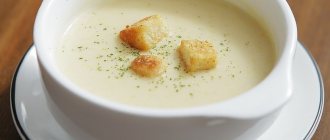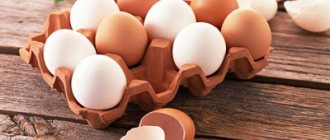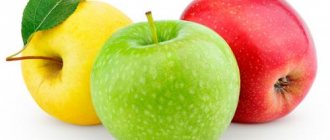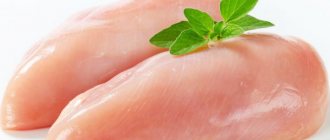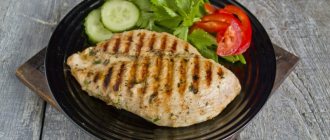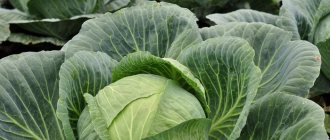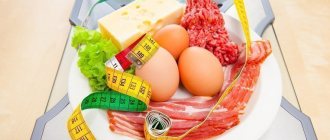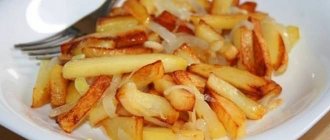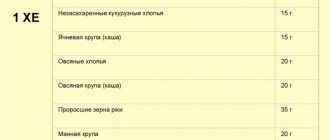The popular cauliflower, which is now enjoyed with pleasure in almost every family, used to be an incredible delicacy, worthy only of the tables of aristocrats. Researchers associate the appearance of this vegetable with the history of ancient Syria, where local craftsmen were able to select it from kale. Later, the colored variety began to be grown in Spain and Italy. In ancient times, farmers of the island of Cyprus were considered the main suppliers of seeds of this garden crop to European states. The cost of the seeds and the vegetable itself was incredibly high, and therefore in the Russian Empire ordinary people did not even know about its existence. And even at the royal court they rarely enjoyed it.
At first, they tried to grow cauliflower in central Russia, but due to the cold climate, the first experiments failed. During the reign of Empress Catherine II, the famous agronomist Andrei Bolotov was able to develop a special variety of vegetable that could withstand our harsh climatic conditions. Since then, cauliflower began to win more and more admirers. Now it is included in many dietary programs, as scientists have proven the incredible benefits of cauliflower for weight loss. The vegetable is rich in various vitamins and microelements. In addition, the negative calorie content of cauliflower is more important for weight loss. Let's find out in more detail the pros and cons of including this vegetable in the diet menu and the best ways to prepare it.
Benefits of cauliflower for losing weight
The head of cauliflower consists of many inflorescences tightly adjacent to each other. Each inflorescence resembles a small tree with overgrown branches. Typically the vegetable is white, but there are also individual species that are orange and purple in color.
Compared to white cabbage, cauliflower contains 2-3 times more vitamin C and 1.5-2 times more protein. Also, the fiber contained in cauliflower is much more tender than in a white head of cabbage. It is digested easily, softly and delicately, while the gastrointestinal tract is not loaded, which allows the vegetable to be included in the first foods for children in pureed form.
The benefits of consuming cauliflower are enormous:
- its regular consumption minimizes the risks of developing cancer processes;
- improves the functioning of the body's cardiovascular system;
- controls cholesterol levels in the blood;
- improves intestinal motility, bile secretion, eliminates toxins and slagging;
- useful for pregnant women, as it reduces the risk of congenital anomalies of the fetus;
- strengthens blood vessels;
- promotes fat burning.
Cauliflower (boiled in water has one of the lowest calorie contents among other vegetables) will help with weight loss. It will naturally and gently cleanse the intestines, remove excess fluid from the body, and improve metabolism.
Nutritionists assign a special role in losing weight to the malic, tartronic and citric acids and pectin contained in cauliflower, which do not allow fat deposits to accumulate. Thanks to the abundance of fiber, cabbage is highly nutritious and helps burn fat.
Chemical composition and beneficial properties of the vegetable
Cauliflower is a valuable product for health, because its chemical composition includes many vitamins, macro- and microelements, minerals, amino acids and other substances that bring great benefits to the human body. We focus on this fact: cauliflower will be healthy and nutritious regardless of the method of heat treatment. Both raw and boiled, fried, baked and stewed, the vegetable has a positive effect on health. Vitamins and other useful substances are contained in different types of products in almost the same quantities.
© katrinshine – stock.adobe.com
The chemical composition of cauliflower includes vitamins K, A, C, E, H, PP, and B vitamins (B1, B2, , B6,). They affect health in the following ways:
- Vitamin A. Essential for the immune system, strengthens bones and teeth, has a rejuvenating effect, slowing down the aging process and has a positive effect on the organs of vision and the cardiovascular system.
- B vitamins. They affect almost the entire body: the cardiovascular, immune, nervous, circulatory systems, and strengthen nails. They improve memory and charge the body with energy, increasing vitality. When using them, a person feels a surge of strength and is ready for active work. That is why B vitamins are recommended for periodic intake.
- Vitamin C. Natural antioxidant. These substances stimulate the body's defenses, preventing viruses and bacteria from weakening the immune system. Vitamin C fights many diseases and also slows down the development of cancer cells.
- Vitamin E. Necessary for the normal functioning of the circulatory and endocrine systems, restoration of hormonal levels in women and increased sexual activity in men. Vitamin E will also help women normalize the menstrual cycle and prevent infertility. If you are planning a pregnancy, vitamin E is exactly what you need. It is indicated for use by both men and women.
- Vitamin K. Has a positive effect on the circulatory system, namely improves blood clotting. It is this vitamin that will help wounds heal faster.
- Vitamin N. Improves the condition of hair: it does not fall out, remains strong and silky. Problems of fragility, splitting, and loss will no longer bother you. Vitamin H also affects the skin: the skin remains soft, elastic and youthful longer.
- Vitamin RR. Stimulates blood circulation, prevents the formation of blood clots, and normalizes cholesterol levels. Nicotinic acid is good for hair, like vitamin H. For this reason, PP is an ingredient in many cosmetic and home hair care products.
In addition to vitamins, cauliflower is rich in dietary fiber, which also provides benefits. These substances cleanse the body of toxins and waste. Dietary fiber has a beneficial effect on the gastrointestinal tract. The functioning of the stomach, intestines, and pancreas returns to normal, and the digestion process improves. Thanks to the dietary fiber contained in cauliflower, you can cope with gastrointestinal problems such as diarrhea, constipation, bloating, and flatulence. The walls of the stomach and mucous membrane are reliably protected by dietary fiber from ulcerative formations.
Cauliflower is rich in useful micro- and macroelements: magnesium, phosphorus, selenium, potassium, calcium, zinc, manganese, iron, copper, sodium. Each of them has its own purpose. For example, zinc and calcium are essential for strong bones. A lack of these substances will negatively affect your health: teeth will begin to crumble and fall out, nails will break, and the risk of fractures will increase.
Iron enriches the body with oxygen. Sodium takes an active part in the normalization of kidney function and maintains the water-salt balance in order. Manganese counteracts the development of ovarian diseases. This element is beneficial for the nervous system, it has a calming effect on it. Manganese is especially needed for people suffering from allergies. Thanks to potassium, waste is removed from the intestines and stomach and the risk of edema is prevented. Potassium is what will help restore strength after exercise.
© anastya — stock.adobe.com
Cauliflower has the following medicinal properties: restorative, immunostimulating, choleretic, anti-inflammatory, anti-stress, sedative.
The vegetable provides comprehensive health benefits:
- improves immunity and leads to a speedy recovery and recovery from illness;
- strengthens blood vessels, thanks to which the functioning of the entire circulatory system returns to normal;
- is easily absorbed by the body, therefore it is an excellent option for feeding infants, feeding older children and women during pregnancy;
- prevents the development of stroke;
- restores intestinal microflora;
- protects the body from microbes, prevents the development of ulcers and tumors;
- reduces the risk of cancer;
- affects the functioning of the heart, restores heart rhythm;
- has an anti-inflammatory effect;
- used for weight loss due to its low calorie content;
- fights depression, nervous breakdowns, stress;
- rejuvenates the skin.
As you can see, raw, boiled, stewed, baked and fried cauliflower has a positive effect on the human body as a whole, improving well-being, mood, and appearance. This miraculous vegetable will help cope with many problems, and most importantly, improve the body’s immune status. The product should definitely be included in the diet - in addition to the benefits, it will give gastronomic pleasure.
Vegetable calorie content and nutritional value, nutritional supplements, vitamins
Cauliflower (the calorie content of boiled, fried, stewed and frozen cabbage will be described later in the article) in its natural raw form has a nutritional value of only 31 kcal (127 kJ) per 0.1 kg of product.
| BJU (per 100 g) | Vitamins |
| A-8 mcg, B1-0.08 mg, B2-0.102 mg, B4-57.1 mg, B5-0.696 mg, B6-0.222 mg, B9-57 mcg, C-88 g. |
Depending on the method of preparation and storage, the concentration of nutrients and calorie content may vary.
Boiled
Cauliflower (calorie content boiled in water is 33.27 kcal per 0.1 kg) will most retain all the benefits of the nutrients it contains if it is simply boiled.
Calorie content of boiled cauliflower
At the same time, it is incredibly easy to prepare; you just need to disassemble the cabbage into inflorescences and place them in boiling water for 10 minutes. Such a dish can be either a separate independent side dish or an ingredient for a salad. The content of BZHU in boiled cabbage is 2.08 g, 1.21 g and 4.15 g per 100 g of product, respectively.
Fried cabbage
Cauliflower fried in batter will help diversify your diet menu. This is a very tasty and satisfying dish. Its calorie content, of course, is slightly higher than that of boiled cauliflower (99 kcal per 0.1 kg), but still the dish can claim to be a dietary one, especially if the inflorescences are fried not in sunflower, but in olive oil.
With this processing method, the fat content of the product and the carbohydrate content increases (due to the batter made from flour and eggs). BJU of the finished dish (per 100g) is – 2.87 g, 7.69 g, 5.10 g.
Braised cabbage
Stewing is a method of processing foods in which they are simmered in water, oil and their own juices. Stewed cauliflower as a side dish will be good both on its own and as part of a vegetable platter (stew) of various vegetables (eggplant, zucchini, peppers, tomatoes, carrots).
The calorie content of stewed cabbage is lower than fried cabbage and is 58 kcal per 0.1 kg, which allows it to be consumed by people who want to lose weight. The ratio of BJU per 100 g of weight in stewed cabbage is 2.05 g, 3.45 g, 5.05 g.
Frozen
Of course, fresh cabbage that has not been frozen will bring the greatest benefit to the body. However, freezing allows you to consume vegetables all year round, and not just in season, albeit with a reduced concentration of nutrients. Before freezing, the cabbage is washed, cleaned of dirt and divided into inflorescences.
There is no need to defrost the florets before cooking. Despite the loss of some beneficial microelements when exposed to cold, most of the nutritional components are still preserved. The calorie content of the product is 25.56 kcal per 0.1 kg, and the BJU ratio is 2.2 g, 0.21 g, 3.97 g per 0.1 kg of product.
Calorie content of foods. Supercalorizer - online calorie calculator
Using a free calorie calculator, you can create a menu of a certain calorie content or calculate the energy value of your breakfast, lunch and dinner for free and without registration. The calculator is a giant database of food products and works like a street coffee machine: you simply select the desired product or ready-made dish, indicate its weight and add it to your menu.
The menu is displayed directly below the site logo and shows the total number of kilocalories (kcal) in the selected products, as well as the calculation of their protein, fat and carbohydrate content. You can print it or save a quick link that allows you to share the menu with other people or return to it in the future.
First of all, the calculator will be useful for people who want to monitor their diet and count calories in order to lose excess weight and maintain normal body weight in the future. Controlling your caloric intake is one of the most effective ways to lose weight. This online counter will make this process convenient and fast. The advantage of the calculator is that there is no need to use special kitchen scales and weigh each product separately.
Also, the calorie calculator will be useful for athletes, bodybuilders and fitness enthusiasts who want to control the amount of proteins, fats and carbohydrates in their menu. For example, to build muscle mass, you can create a protein diet menu using this site. And for the so-called “drying” (the process of rapid weight loss), you can create a menu low in carbohydrates.
By the way, this site can also be used for purely reference purposes. Essentially, this is an online table of calorie content of foods divided into categories. If you don’t need to create a menu, but just need to find out how many calories are in a particular product, then we recommend using a quick search in the product database at the very top.
How to count calories: step-by-step instructions.
Step 1: Find the product you need.
If you have already selected a product, simply enter its name into the quick search found at the top of each page. In the drop-down hint, the system will offer you all available options. Click on the one you need.
If you haven't decided yet and just want to choose a product, go to the category you are interested in and just click on it.
Step 2. Specify the mass and add to the menu.
After clicking on the product, a pop-up window will open in which you need to select the desired mass (i.e. how much you are going to consume in grams) and click “Add”.
The added product will automatically move to the summary menu located at the top of the page (right below the site name)
Step 3: Print the menu or save a quick link.
If necessary, you can print the menu or get a quick link to open it in the future. The corresponding buttons are located to the right of the final calorie calculations:
Calorie intake per day
As such, there is no single and generally accepted daily calorie intake. According to the recommendations of the World Health Organization, the energy entering the body (in calories) must be balanced with the energy expended. ". Thus, your individual calorie intake depends, first of all, on the nature of your work, level of physical activity, gender, age and a number of other factors. However, on the Internet you can find many tables and calculators of unknown origin, offering information on daily values, supposedly based on authoritative sources. We believe that the quality of this information is quite questionable.
The most reliable way to determine individual calorie needs is to simply calculate the energy value of food consumed during the day (or several days). Just record your normal daily diet on paper. Write down what and how much you ate during the day. Calorie content can be directly calculated using information from product labels and using our website. Provided that you are healthy and your weight does not change much with your current diet, the results obtained can be conditionally considered your daily norm.
To lose weight, you need to slightly reduce your daily energy intake. If you maintain your current lifestyle, you will experience a slight calorie deficit because your costs will remain the same. This will lead to the gradual burning of your fat reserves. What exactly the deficit should be is up to you to decide. We strongly advise against increasing it sharply, because... it won't lead to anything good. Reduce your calorie intake gradually and lose weight slowly. This way you won’t have to torture yourself and break down from time to time. And of course, before making any dietary changes, we strongly recommend that you consult with your doctor or qualified dietitian.
How much cauliflower can you eat?
To prevent cauliflower from causing harm to the body, it should be consumed in moderation. The daily intake of vegetables is about 250-300 g in any form (boiled, baked, fried) 3-4 times a week and 100 g when the vegetable is included in the diet daily.
For gastrointestinal diseases, you can eat cabbage in small quantities - 10-20 g per day, while during periods of exacerbation of diseases, it is generally better to abstain from consuming this vegetable due to the abundance of fiber. Pregnant women, in the absence of allergies or heartburn, are allowed to consume 150-200 g of cauliflower per day.
The norm for breastfeeding women is approximately the same, but cabbage can be consumed no earlier than 1.5 -2 months after birth.
Cauliflower is one of the first vegetables introduced into the diet of babies under 1 year of age. Unlike white cabbage, its delicate structure does not cause increased gas formation and is perfectly absorbed by the child’s body. Start giving vegetable puree a little at a time with 0.5 teaspoon. By the age of one year, a child can be given no more than 50 g of cauliflower per day, no more than 3 times a week.
Contraindications for use
Like any vegetable, cabbage is healthy in moderation. With constant consumption of the whole fruit or individual inflorescences, the risk of developing gastritis, flatulence, and diarrhea increases.
Contraindications to introducing the product into the diet are ulcerative enterocolitis, stomach cramps, increased acidity, individual intolerance and allergies.
Due to its ability to crystallize urea, cauliflower is dangerous for people with gout or kidney failure.
People with hypertension or endocrine diseases should not eat dishes based on inflorescences; it is not recommended for consumption by those who have recently undergone surgery in the abdominal or thoracic cavity.
Options for express diets with cauliflower
Cauliflower (boiled in water has a lower calorie content than stewed or fried cabbage), present in the diet in boiled form, is ideal for getting your body in order in a short time. The best option is to add cabbage to the menu and stick to proper nutrition. There are short express diets using cauliflower.
A short mono-diet, designed for 3 days, involves consuming only cauliflower. On the first day, you are allowed to eat 1.3-1.5 kg of fresh cabbage. On the 2nd and 3rd days, the vegetable can be boiled in the same quantity. They eat only cabbage 6-7 times a day all day long. Be sure to follow a drinking regime and drink 1.5-2 liters of water per day.
You can lose 2-3 kg on such a diet, but such a mono-diet, even a short one, is not balanced, and you should not resort to it more than once every 6-8 months.
A more gentle version of the cauliflower diet, designed for a week. You should eat 4 times a day in small portions. Boiled cauliflower should make up 1/3 of the diet.
In addition to vegetables, you can eat:
- fish and meat (low-fat);
- vegetables (except potatoes);
- fruits (except bananas and grapes);
- buckwheat, millet;
- eggs.
Drinks you should choose are tea without sugar, herbal infusions, and low-fat kefir.
Another option is a diet for 5-7 days with a minimum amount of permitted additional products. The basis of the diet (up to 70%) is boiled cabbage.
Other products allowed include boiled chicken fillet, unsweetened yogurt, low-fat kefir, and apples. You should not stick to this diet for more than 7 days. When following any diet, you should not forget about maintaining the body’s water balance and drinking a lot of clean water.
Precautions while dieting
Despite the great benefits of cauliflower, a diet based on this product is not suitable for everyone.
Consumption of this vegetable in large quantities is not recommended for people:
- having kidney problems;
- suffering from colitis, enterocolitis;
- with increased stomach acidity;
- for hypertension;
- for gastrointestinal diseases (especially during exacerbation);
- for diseases of the genitourinary system;
- if you have a personal intolerance to the product (not common);
- for gout;
- during gestation and breastfeeding;
- in case of disturbances in the functioning of the endocrine system;
- during the postoperative recovery period.
While following a diet, you should carefully monitor all reactions of the body. If weakness, nausea, or dizziness occur, the diet should be softened or stopped altogether. Physical activity during the diet is not prohibited, provided you feel normal. People who find it difficult to maintain a diet eating only one product should start with fasting days on cauliflower.
Healing properties
Cauliflower juice, inflorescences and even leaves contain substances that can resolve tumors, heal damaged tissue, and dilate blood vessels.
Dietary fiber fights the deposition of fat cells, accelerates metabolism, and removes cholesterol
The curly fruit has a positive effect on the walls of the stomach, intestines, heart, brain, and skin.
Dietary fiber fights the deposition of fat cells, accelerates metabolism, and removes cholesterol. Like all cabbage varieties, this one has antiseptic properties and removes toxins.
Low calorie cauliflower dishes
In fact, when you are on a diet, you don’t have to eat only boiled cauliflower. Other cauliflower dishes prepared without a large amount of sunflower meat will also be low-calorie and light. The inflorescences can be baked with lean meat, cooked in vegetable stew, cream soup, salads, or fried in batter.
If cabbage is not purchased fresh, but frozen, then it is better to take a semi-finished product from a reliable, trusted company. In this case, you should pay attention to the appearance of the inflorescences, which should be clean, free of dirt, blackening and insects. High-quality frozen cabbage does not require cleaning; it must undergo all these procedures before freezing.
To prepare juicy and tender cabbage, you should follow these recommendations:
- Frozen cabbage is pre-boiled before baking, but no more than 5-7 minutes, that is, it is not brought to readiness, but only slightly simmered. If this is not done, the cabbage in the dish will be tough and cooking will take longer;
- There is no need to pre-defrost the cabbage inflorescences, regardless of how it will be prepared;
- dip the cabbage corollas into already salted boiling water;
- You can’t cook the vegetable for a long time, it will become too soft and loose. Properly cooked cabbage should be crunchy;
- To ensure that the cabbage is snow-white after cooking, you can sprinkle it with a small amount of lemon juice.
Cream soup
Light creamy cauliflower soup can be the main dish of a 7-day diet.
The following components need to be prepared:
- cauliflower -800 g;
- chicken fillet – 400 g;
- carrot – 1 pc.;
- salt;
- water – 2-2.5 l.
Place washed chicken breasts into boiling water. To simplify the task, you can immediately cut the meat into small pieces, but you can do this later. Boil the chicken breast for 20-25 minutes, after which separated cabbage inflorescences and chopped carrots are dipped into the water.
Cook for another 10-12 minutes, add a little salt and turn off. Let the soup sit for 7-10 minutes, then puree using an immersion blender. Before serving, sprinkle the soup with herbs.
Casserole
Cauliflower, whose calorie content boiled in water is low, can be prepared for the dietary table not only by boiling, but by baking. When roasting, all the beneficial substances are retained as much as possible in the vegetable. Vegetable casserole made from cauliflower inflorescences is suitable for both lunch and dinner. This casserole is made especially aromatic and crispy from fresh cabbage.
For preparation take:
- hard cheese (low fat) – 130-180 g;
- sour cream (fat content no more than 15%) – 250 mg;
- eggs – 3 pcs.;
- cauliflower – 700 g;
- greens, salt - to taste.
The head of cabbage is disassembled into corollas, cutting off the thick stems, and rinsed under water. The cabbage needs to be cooked first. To do this, lower all the inflorescences into boiling water for 6-7 minutes. The main thing is not to overcook the cabbage, otherwise it will turn into mush, fall apart, and the dish will not work out. While the cabbage is boiling, prepare the filling.
Break the eggs and lightly beat with a whisk. Add sour cream and mix again. The cheese is grated and combined with egg and sour cream mixture. Add salt (a little) and dill to the filling. The container in which the casserole will be prepared is greased with vegetable oil using a brush. The cabbage is placed in the mold quite tightly, after thoroughly draining the water after cooking.
Cover the entire cabbage with the filling, trying to distribute it evenly. The oven is preheated to 190-200C. The dish is placed inside for 30-40 minutes. The readiness of the casserole is determined by the crust - when it is browned, the pan can be removed. You should not cut the hot casserole; you should let it cool slightly. When warm, it cuts well and does not lose its shape.
Garnish for meat
Cauliflower makes an unusual and healthy side dish for meat, cutlets, and meatballs.
To prepare you will need:
- 1 cauliflower;
- 2 eggs;
- 3 tbsp. butter;
- 3 tbsp. flour;
- salt.
The cauliflower is cut into pieces and immersed in salted water for 15-20 minutes. After the designated time, the water is drained and the cabbage is washed. After this, the inflorescences are already set to cook over moderate heat until tender (10-15 minutes after boiling). The water is drained, leaving 250 ml of vegetable broth for the sauce.
In another pan, melt the butter and add flour, mixing everything vigorously. When the flour and butter combine into a homogeneous mass without lumps, add the vegetable broth. Boil the sauce for 5 minutes, add salt and cook until the desired degree of thickening.
When its density is comparable to heavy cream, add another 1 tbsp. butter and yolks and mix everything well. The resulting gravy is poured over the cauliflower. Served as a side dish with lean dietary meat of rabbit, turkey, chicken, and lean pork.
Salad
Cauliflower, whose calorie content per 100 g of product is very low, can be included in multi-component dietary salads. For salads, both inflorescences boiled in water and baked are used.
For a light and original salad with a spicy dressing you will need:
- 400 g cauliflower;
- 3 boiled eggs;
- 2 tbsp. olive oil;
- dill;
- 1 sweet pepper;
- 1 onion (small);
- 150 g Greek yogurt;
- 1 tsp no spicy mustard;
- 1 clove of garlic;
- 1 tsp honey;
- 1 tbsp. lemon juice;
- salt, pepper - to taste.
Cauliflower is washed and separated into inflorescences. Place the whisks in a bowl, pour in 2 tbsp. olive oil, add salt. Place cauliflower on parchment paper on a baking sheet pre-greased with vegetable oil and place in the oven preheated to 200C.
Cook until a slight golden brown crust appears, but do not allow it to brown too much, about 15-20 minutes. Remove and let cool. The eggs are not chopped very finely, the peppers are cut into strips, the onions are cut into small cubes, and the dill is chopped. Combine everything and mix, add cauliflower.
For dressing, mix Greek yogurt, mustard, honey, lemon juice and crushed garlic in a separate container. Mix everything well until a homogeneous mass is formed in color and consistency. The resulting sauce is used to season the salad. Baked cabbage can be replaced with simply boiled cabbage.
Cauliflower in a slow cooker
You can boil cauliflower in a slow cooker and bake it just like in the oven. Cooking times and modes will vary depending on the multicooker model, but most often it will be “steaming” and “baking” or “roasting”.
You can also cook diet meatballs with cauliflower in a slow cooker. To do this take:
- 400 g minced chicken (preferably from poultry fillet);
- 1 onion;
- 400 g cauliflower (frozen or fresh);
- 1 egg;
- 100 g cheese;
- 1 bell pepper (not large);
- 200 g sour cream;
- salt, pepper to taste.
The cabbage is washed and divided into inflorescences. Fill the bowl of the multicooker with water (enough to cover the cabbage) and drop the vegetables into it. Cook in the “steaming” mode for about 5 minutes. after the water boils. Then take it out and let it cool. Add an egg, finely chopped pepper and onion to the minced meat, add salt and pepper.
In order for the meatballs to keep their shape, lightly beat the minced meat, lifting it and throwing it onto a plate. Meatballs are made as follows: take two lumps of minced meat, give them the shape of a flat cake and put cauliflower between them. The edges of the flatbread are pressed together, giving the meatball an oval shape.
Place the meatballs in the multicooker bowl in two rows, adding sunflower oil first. Top the meat balls with sour cream and sprinkle with grated cheese. Cook in multi-cook mode for 25 minutes. at a temperature of 125C.
Conclusion
Cauliflower is extremely healthy and tasty, it has very few calories, and there are a huge number of options for preparing it.
Introduce cauliflower into your diet and the result will pleasantly surprise you: excess weight will go away, your skin will look fresh and youthful, and your internal organs will work like clockwork.
Selection and storage of cauliflower
Whether the body will benefit from cauliflower depends on how carefully you choose it. Ideally, the maximum benefit will come from vegetables grown independently.
If it is not possible to grow the crop on a personal plot, when purchasing cabbage, you should pay attention to:
- leaves - their color should be the same over the entire surface, and their structure should be uniform;
- defects - absence of leaves, indicates that the product may be of poor quality and they tried to hide it;
- the presence of dark areas on the inflorescences - they appear when the product is not stored correctly, or is not a fresh product;
- weight of cabbage - it should be quite heavy and dense; light cabbage indicates loss of moisture in the vegetable during long-term storage;
- When purchasing a frozen product, you should pay attention to the expiration dates and the amount of ice in the package. Excessive frost on cabbage indicates that the product may have been frozen more than once.
Cauliflower should be stored in the vegetable compartment of the refrigerator without film. When stored this way, the vegetable will retain its freshness for 7-10 days.
The benefits of cauliflower for people losing weight and looking after their health are enormous. The low calorie content of the product allows you to prepare many dishes for the dietary table. The vegetable is boiled in water, baked, fried and made into hearty but light cream soups. A mono-diet of cauliflower will help you quickly lose weight, and its regular and moderate subsequent consumption will maintain it at normal levels for a long time.
